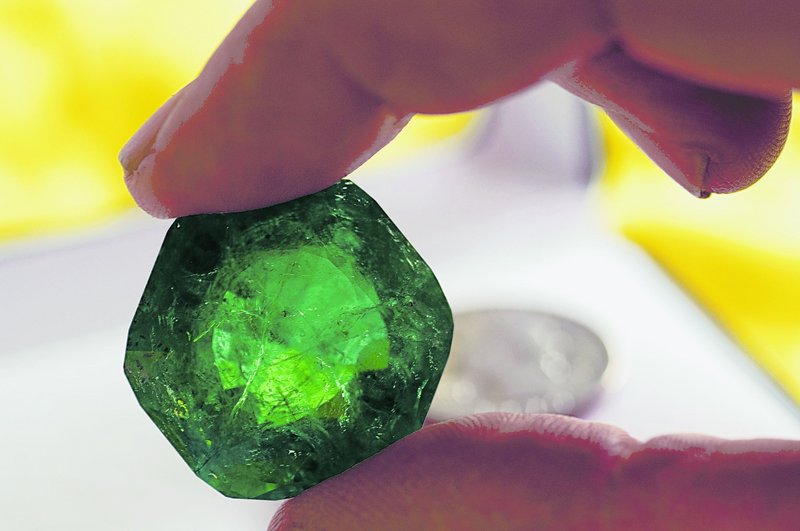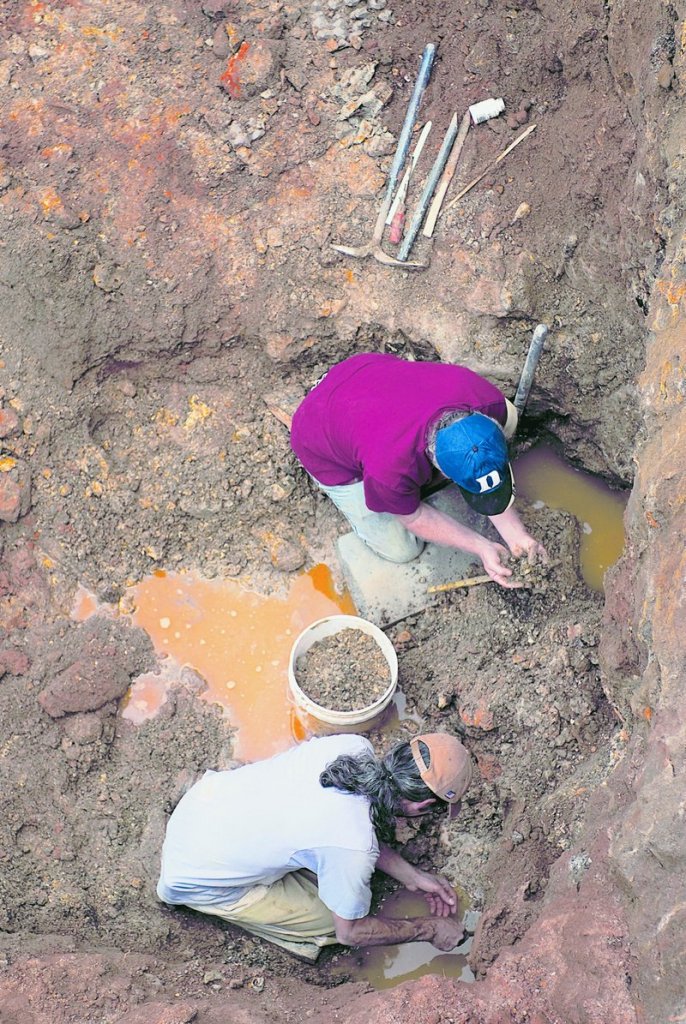CHARLOTTE, N.C. – The Alexander County, N.C., community famed for its lunker emeralds has yielded a 64-carat gem that experts say is North America’s largest cut emerald.
Gem miner Terry Ledford said the deep-green crystal he dug up in Hiddenite last August was so big it “looked like an empty 7-Up bottle.” About 2 inches square, it weighed 310 carats before being cut. Its hue made it even more desirable.
“I was saying a prayer, literally, just thanking him,” Ledford said. “I held it up to the sun, and it was so dark you almost couldn’t see any light through it.”
After having the stone cut and recut, Ledford and his partner gave the emerald a trademarked name: the Carolina Emperor.
A respected New York gemologist, C.R. “Cap” Beesley, called it “by far the largest gem ever recovered from North America and North Carolina,” including rubies and sapphires. Beesley compared the Emperor to a cut emerald of similar size that sold for $1.6 million earlier this year.
“I don’t know of any faceted emerald larger than this,” said geologist Michael Wise of the Smithsonian’s National Museum of Natural History mineralogy division. “It’s mostly difficult to get big (gem) stones, so this would be something really unusual for North America.”
Most quality emeralds come from Colombia. But the rural crossroads of Hiddenite, about 45 miles northwest of Charlotte, has made its own name.
The community is named for the rare, deep-green mineral a scientist working for Thomas Edison saw there in the late 1800s. Large emerald crystals also have been found, but relatively few have been of high enough quality to cut into gemstones.
Miner Jamie Hill found an emerald in 1998 that he cut into the 18.8-carat Carolina Queen and the 7.8-carat Carolina Prince, together worth about $1.5 million. Since then, Hill has dug up a two-piece emerald crystal that weighed 1,800 carats, another that was 10 inches long and a third of 972 carats.
The largest single uncut emerald crystal found in North America, a hefty 1,438 carats, was found there in 1969, the North Carolina Geological Survey says.
Why Hiddenite? Wise has been among experts trying to figure that out for a decade.
“It’s an oddball thing, it really is,” he said, adding that the community’s underlying geology is unlike most places where emeralds are found.
“Why it’s concentrated in Hiddenite, we don’t know. It may be as simple as by coincidence the right rocks and the right fluids were present.”
Ledford’s stone was the payoff for a lifetime of digging. His father was a mica miner and rock shop owner in the mountains of Spruce Pine, which is also famed for its minerals. “I more or less grew up on it,” said Ledford, 53.
He and partner Renn Adams have dug in Hiddenite, on a farm Adams owns, since 2001. Using a heavy machine called a track hoe, they peel back layers of dirt 3 to 4 inches thick and look for veins of mica or quartz as narrow as a quarter-inch wide.
Using light picks, they follow the veins. Once they spot gems, they start using bamboo or plastic tools to avoid damaging the stones. Ledford found the Carolina Emperor 14 feet below ground last August. He won’t speculate on the Emperor’s value or divulge potential buyers.
Copy the Story Link
Send questions/comments to the editors.




Success. Please wait for the page to reload. If the page does not reload within 5 seconds, please refresh the page.
Enter your email and password to access comments.
Hi, to comment on stories you must . This profile is in addition to your subscription and website login.
Already have a commenting profile? .
Invalid username/password.
Please check your email to confirm and complete your registration.
Only subscribers are eligible to post comments. Please subscribe or login first for digital access. Here’s why.
Use the form below to reset your password. When you've submitted your account email, we will send an email with a reset code.